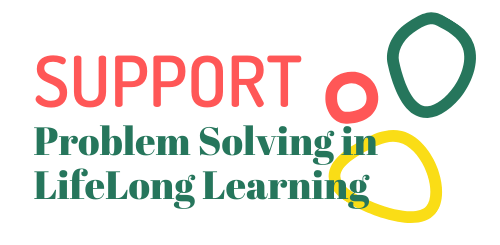Course timeline
Solving the Problem: Activities for Learning Groups
Title of activity
Storm of ideas (Brainstorming)
Working on the activity – Suggestions
Summary: Course timeline is an issue for both learners and educators. Both parties have specific goals in mind and/or specific methods on how to achieve them. The best case scenario is a merge between them all and a way for it to be accomplished is after a brainstorming session with everyone concerned.
Objective: The creation of a concrete lesson/course plan along with the methodology/strategies that will be followed.
Description: The brainstorming method will be used in order to collect ideas from the group and find solutions to the problems presented as everyone’s wants and needs will eventually collide. This activity is recommended to happen at one of the first meetings of the group (it can also take place at any other point if the previous system is deemed insufficient). The educator will present the issues that require solving (for example, the course pace) and the brainstorming will begin. the ideas will be noted down, preferably in a manner and place that ensures visibility for everyone. At the end, a discussion will take place so that a course of action can be formed -one that the group deems satisfactory.
Suggestions: Every student’s idea is to be treated with respect and everyone will be encouraged (and expected) to contribute by, at least, giving their opinion on the proposed suggestions.
Title of activity
Mark my lessons (Calendar)
Working on the activity – Suggestions
Summary: Time management is always an issue when it comes to teaching. By creating a calendar, in cooperation with the students, it will be much easier for everyone to stay on schedule and define the course pace.
Objective: For the group to create a wall calendar for the classroom.
Description: The aim of this activity is to create a calendar that is going to be hung in the class so that it can be visible to everyone. The course timeline will be depicted in it and the learners can offer their suggestions to the educators in order to cover their needs. For example, the topics (and sub-topics) will be highlighted in different colors and their duration will be discussed and decided collectively. The learners can even request topics or propose ones that the educator has not thought about. Moreover, even the dates of tests can be determined (of course always keeping in mind whatever limitations the educator may have). In that way, everyone will respect the course timeline and feel that their needs are taken into serious consideration (and are subsequently covered).
Suggestions: The same can happen with lesson plans if the educator is willing to receive recommendations from the students. That includes how each lesson will be structured and how much time the learners need for each stage (for instance, the students may request less time of the educator delivering new material and more time for studying in order to consolidate the new knowledge).
Title of activity
Setting the pace (Problem tree)
Working on the activity – Suggestions
Summary: The learners will employ the Problem tree method in order to solve the issue of the course pace while the educator summarizes the results and utilizes the learners’ ideas, suggestions and preferences in order to create the lesson plans.
Objective: For the learners to offer feasible solutions to the problem presented.
Description: The educator will provide the students with the problem, in this case setting the pace of each lesson, and the learners, divided into teams, will each untilize the problem tree analysis in order to tackle the problematic issue. The educator should divide the teams and not leave it to chance as it would be more beneficial to have a mixed group -students with various educational levels and capabilities. In that aspect it would be easier for the learners to identify the causes and the effects of the problem and generally it would be a more thought-provoking process. Afterwards, the students will present their problem trees and conclusions will be drawn from the subsequent discussion. At last, the educator will collect the findings and form the lesson plans based on them.
Suggestions: The activity should focus also on the last part, that of the conversation, as that is where the suggestions and the preferences of the learners will be put forth. Preferably, it would be great if an agreement is possible to be reached between them all for the future course of action.
Learn more
Solving the Problem: Self-reflection (educator’s reflection)
Points for Discussion with your Organisation
Suggested Training Course available online
